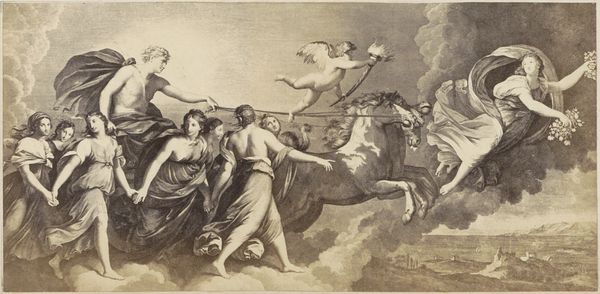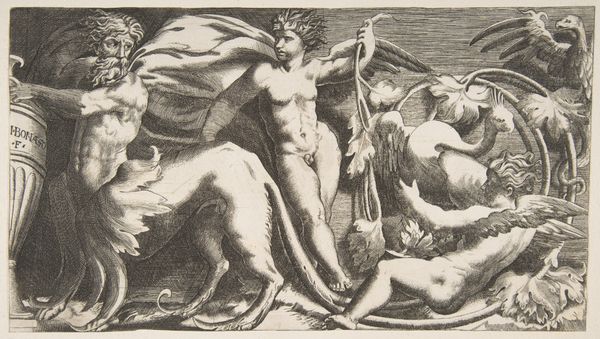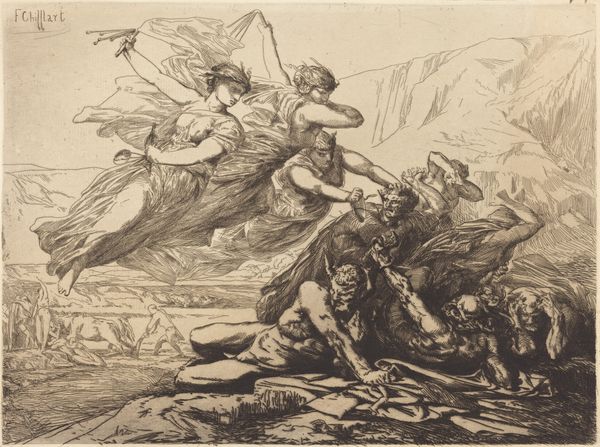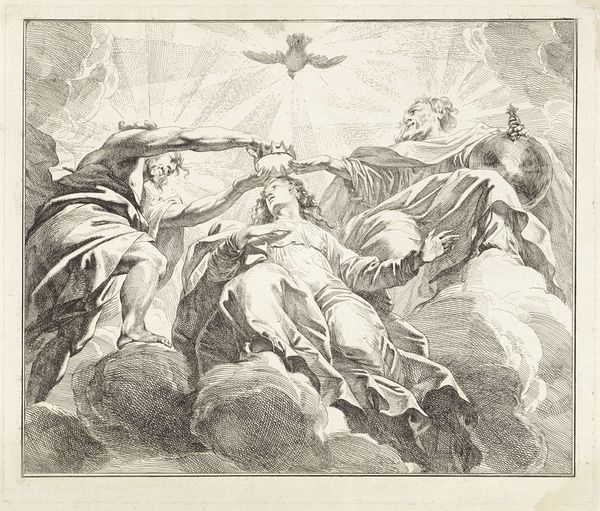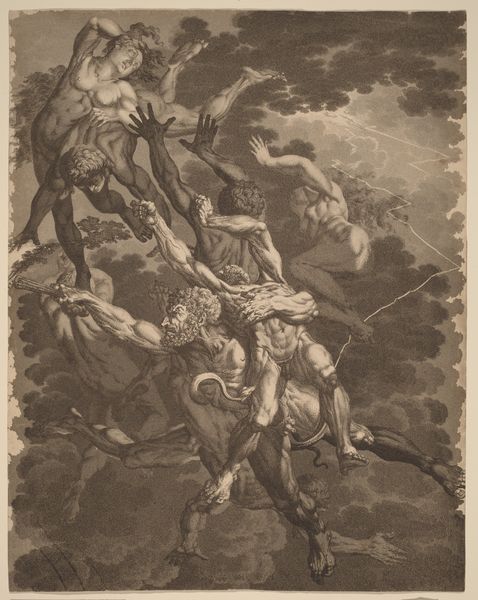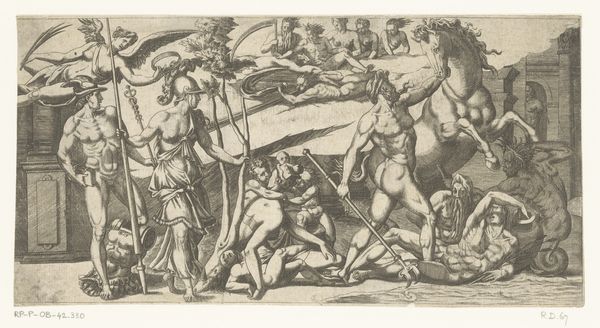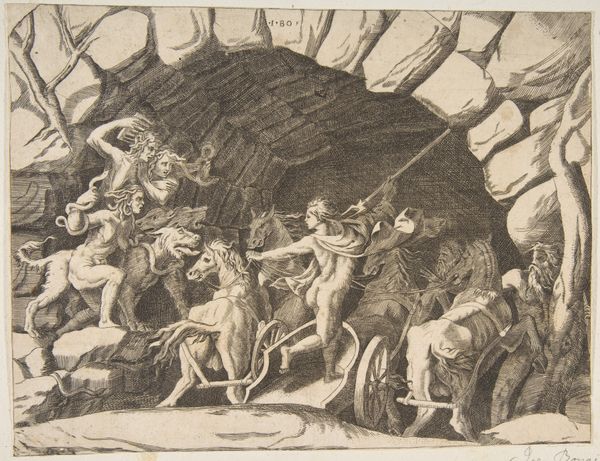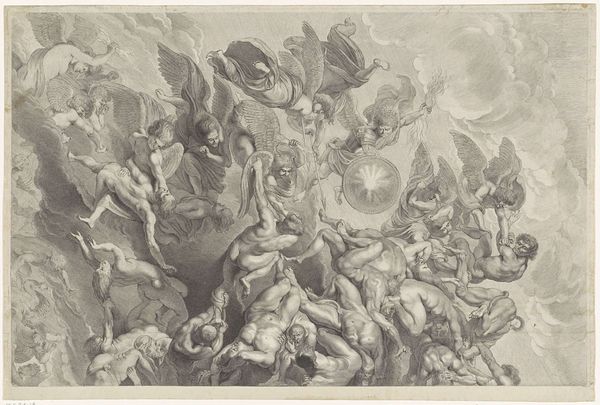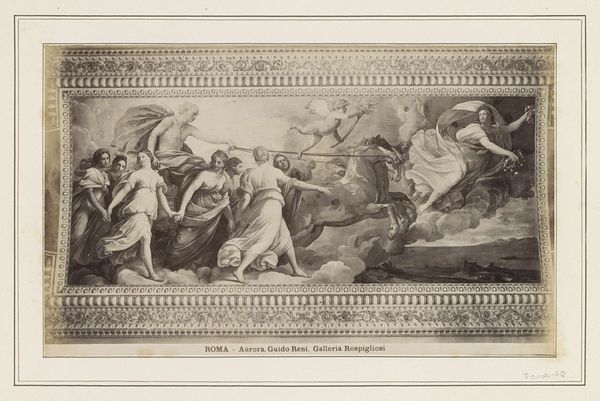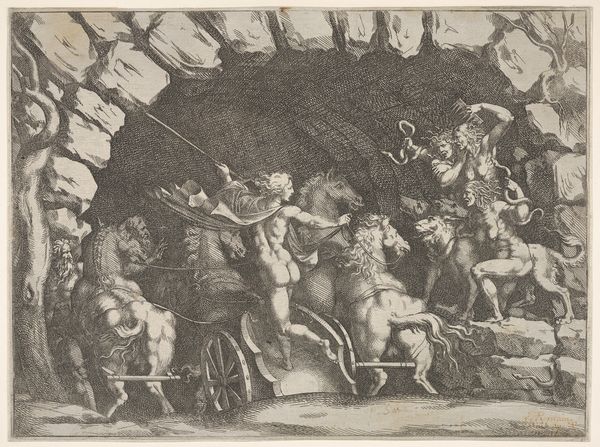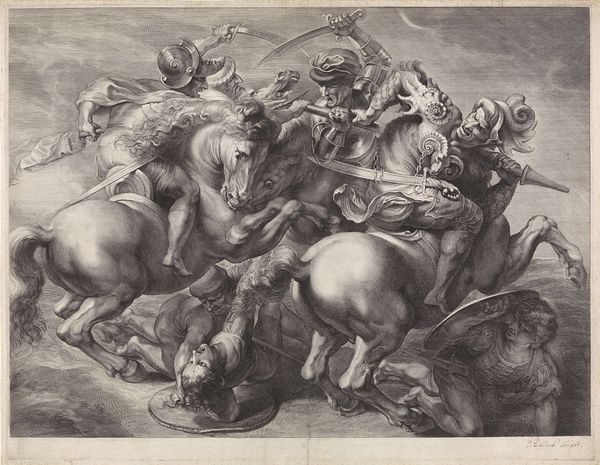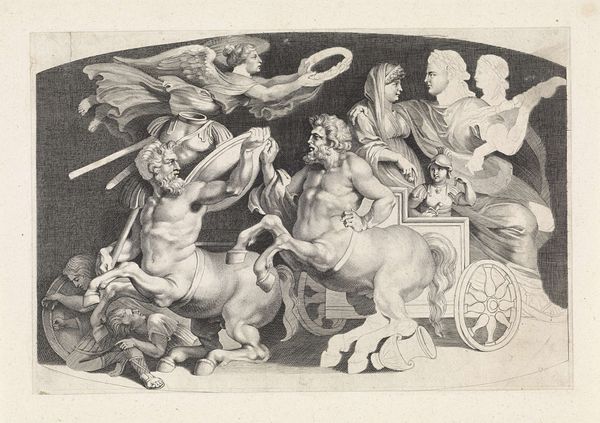
print, engraving
#
allegory
#
baroque
# print
#
figuration
#
line
#
history-painting
#
engraving
Dimensions: 356 mm (height) x 500 mm (width) (bladmaal)
Curator: Right now, we’re standing in front of Jan Harmensz. Muller’s engraving from 1597, titled *Kunstarternes ophøjelse*, which translates to "The Elevation of the Arts.” Editor: It strikes me as something chaotic yet grand, like a fever dream populated by Roman gods. So much activity in this one plane! It’s a little dizzying, don’t you think? Curator: Absolutely, and that tension, that controlled chaos, is part of its Baroque charm, no? Muller masterfully uses line work in this print, creating a dynamism that pushes figures forward, swirling upwards. See how the engraving brings allegory and history-painting together, themes so common during the time. Editor: All those bodies kind of bleed into each other, though. Do you think that maybe represents art consuming life, and life inspiring art? I mean, is that the point of this exaltation, really? Art consuming everything? Curator: Perhaps! Given the era, one could also view it as the power of artistic ingenuity and the human capacity for invention, which are meant to elevate humanity and immortalize cultural achievements. Look at that central cluster – that figure holding the palette, astride the…well, she almost seems to propel the scene forward, toward enlightenment. Editor: She *does* command attention, even among that celestial mob. The eye keeps circling, though, wanting some kind of resolution. Perhaps it’s about the process of elevation itself. The *journey* is really the subject, wouldn’t you agree? It isn't a scene in stillness. It implies change and an action toward an idealized sphere. Curator: Precisely! It is like Muller invites us to celebrate artistic process. It speaks volumes about its commitment to classical ideals infused with its own Baroque dynamism. What do you think? Editor: Now when you mention the idealism…the work, in general, leaves me considering our understanding of such complex concepts—chaos versus order, materiality versus the ethereal, so prevalent during that time. Curator: So even though the initial impression may seem chaotic to some, a closer look can still offer some understanding about these philosophical and material dynamics. Editor: Well, if that initial response ends in intellectual engagement, I would venture to call it a successful artwork!
Comments
No comments
Be the first to comment and join the conversation on the ultimate creative platform.
